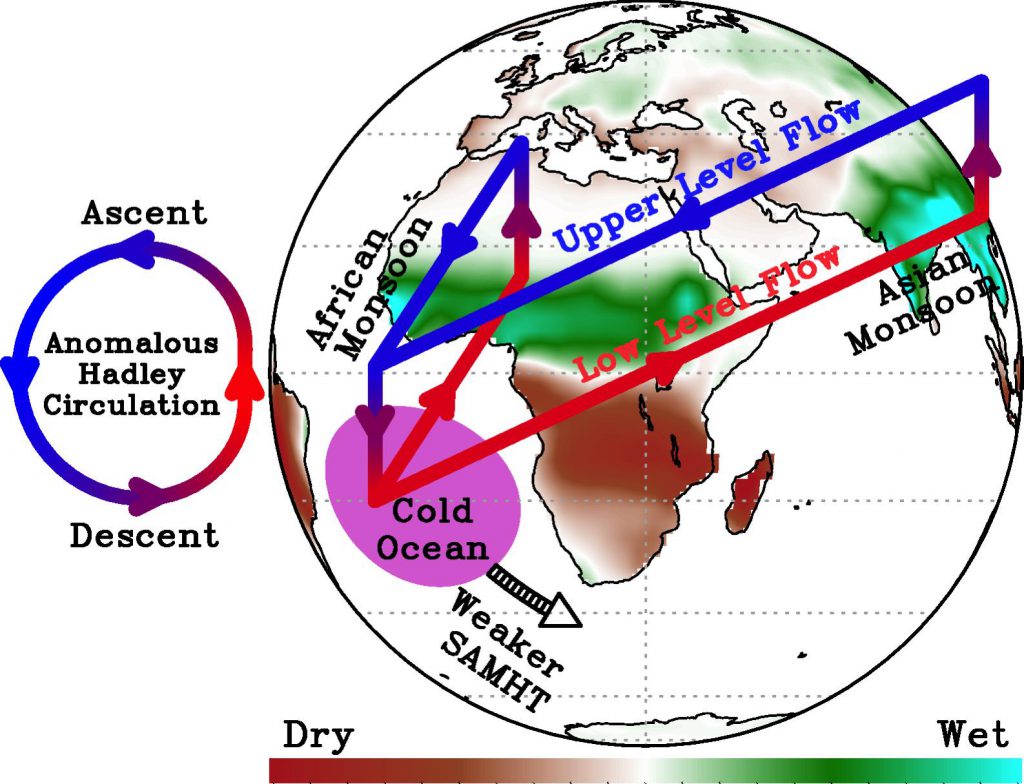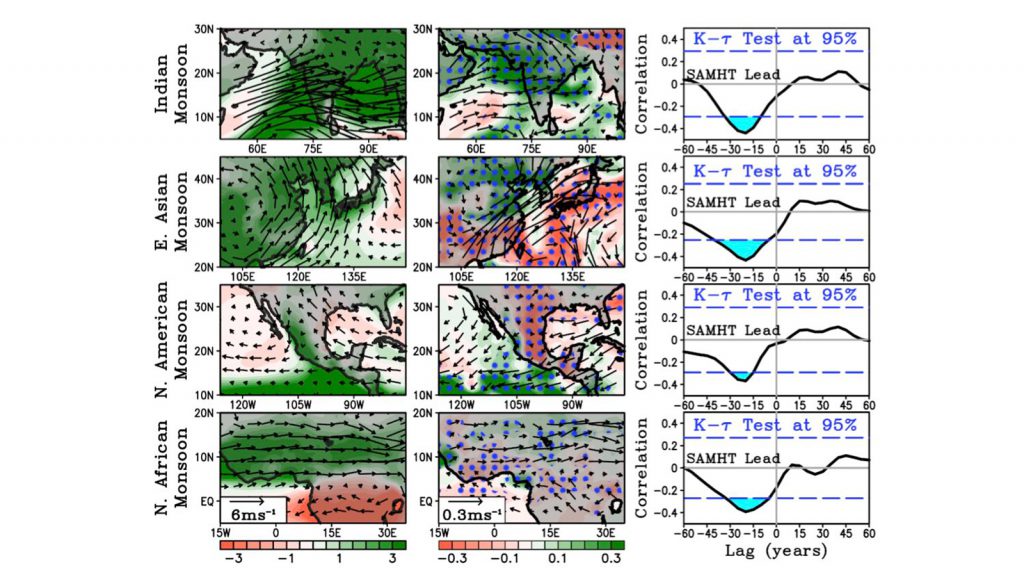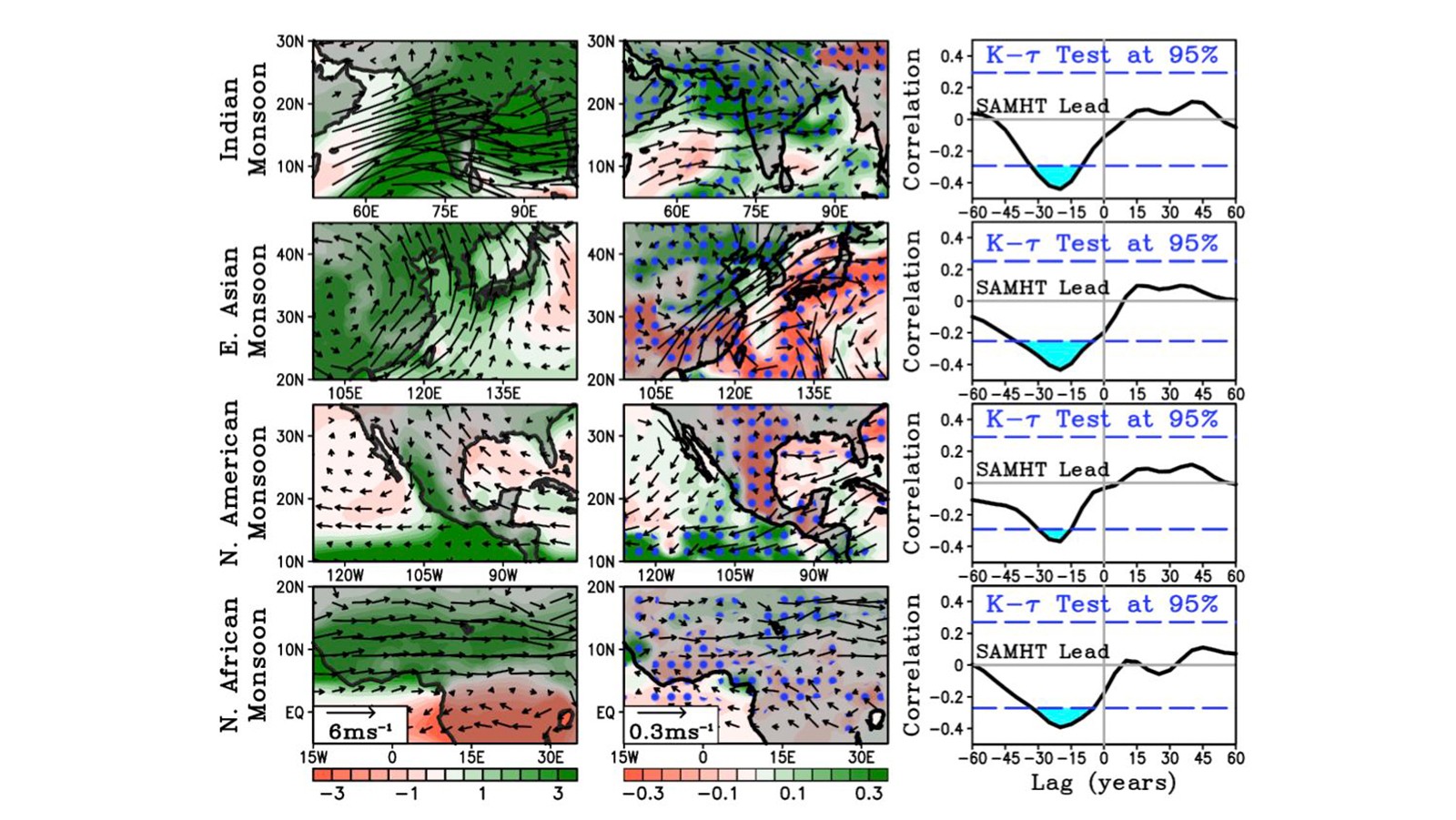A recent paper published in the Journal of Climate led by PHOD researchers Hosmay Lopez, Shenfu Dong, Sang-Ki Lee, and Gustavo Goni provides a physical mechanism on how low frequency variability of the South Atlantic Meridional Heat Transport (SAMHT) associated with the Atlantic Meridional Overturning Circulation ( AMOC) may influence decadal variability of atmospheric circulation and monsoons. This is the first attempt to link the South Atlantic Overturning Circulation variability to weather and climate.
The majority of efforts to understand the dynamics of the AMOC and its climate impact are focused on the North Atlantic. Recently, the research community started investigating and assessing the role of the South Atlantic on climate. The AMOC over the South Atlantic Ocean is unique, in that it is the only major ocean basin that transports heat from the pole towards the equator. The South Atlantic Ocean is characterized by complex and unique ocean dynamic processes, which are important to the global distribution of energy. For example, the Malvinas-Brazil confluence plays a critical role in the exchange of water masses between the subpolar and the subtropical regions. The Agulhas leakage has the potential for modifying the long-term AMOC response that could impact global atmospheric circulation and climate.

The study by Lopez et al (2016) illustrates that multi-decadal variability of SAMHT plays a key role in modulating global atmospheric circulation via its influence on interhemispheric redistributions of momentum, heat, and moisture. W eaker SAMHT at 30°S produces anomalous ocean heat divergence over the South Atlantic, resulting in cooler ocean surface temperature about 20 years later (Fig. 1). This drives an anomalous Hadley circulation, transporting atmospheric heat from the Northern Hemisphere (NH) to the Southern Hemisphere (SH) and moisture from the SH to the NH, thereby modulating global monsoons. This study illustrates that decadal variations of SAMHT could modulate the strength of global monsoons with about 20 years in advance , suggest ing that SAMHT is a potential predictor of global monsoon variability (Fig. 2). In summary, all NH summer monsoons are enhanced during a weaker SAMHT (i.e., negative correlation in Fig. 2).
The results presented in this study highlight the need and value of sustained ocean observational efforts, necessary to improve our knowledge of the complex interaction between the South Atlantic Ocean and global climate variability and monsoons. The anomalous circulation pattern associated with SAMHT variability discussed in this study has great implications for long-term climate variability over the whole globe. For example, it could bring drier and warmer summer conditions over North America and Europe. The results presented here suggest the possibility of decadal predictability of seasonal temperature and precipitation, more so for those regions affected by monsoonal circulation.

Reference Lopez, H., S. Dong, S.-K. Lee, and G. Goni, 2015: Decadal modulations of interhemispheric global atmospheric circulations and monsoons by the South Atlantic Meridional Overturning Circulation. J. Clim., http://dx.doi.org/10.1175/JCLI-D-15-0491.1
